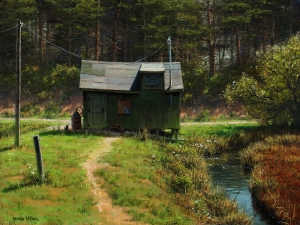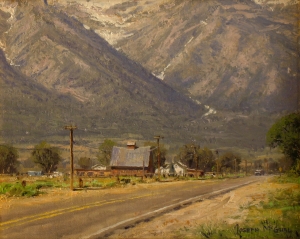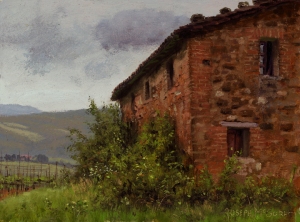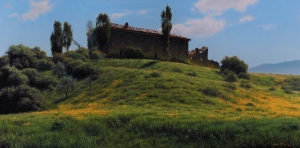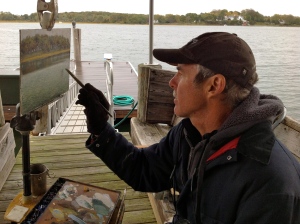 The best way to summarize what I have come to know about Joseph McGurl is to say he has a Yankee sense of efficiency, hard work, and intelligence. Like the sailers, farmers, and fishermen of New England, he doesn’t waste words or time, nor does he shrink from working hard to achieve results that matter. In an age when celebrity is thought to be more important than content, it is refreshing to know that McGurl is achieving great success with his extraordinary paintings.
The best way to summarize what I have come to know about Joseph McGurl is to say he has a Yankee sense of efficiency, hard work, and intelligence. Like the sailers, farmers, and fishermen of New England, he doesn’t waste words or time, nor does he shrink from working hard to achieve results that matter. In an age when celebrity is thought to be more important than content, it is refreshing to know that McGurl is achieving great success with his extraordinary paintings.
I me McGurl about 25 years ago when I was working on a book about oil painting techniques. The publication schedule required him to head out into winter weather to take step-by-step photographs of paintings in stages of development, but that wasn’t a problem for an artist who is accustomed to working through the wind, snow, and freezing temperatures on Cape Cod. He did give himself a break and took his family to the Caribbean to vacation and complete a few paintings for the book.
During my first interview, McGurl told me about two experiences that shaped his approach to painting. One was working for his father and learning how to create the illusion of detail in large murals, stage backdrops, and display panels; and the other was studying the work of 19th century landscape painter to learn how they achieved a higher level of mastery and distinction. He understood that great artists like Frederic Church and Fitz Hugh Lane faced as much competition as did his father and every other artist in New England. McGurl had to create paintings that were exception if he wanted to be the exception to the syndrome of the starving artist.
Over time, I wrote several more magazine articles and book chapters on McGurl, and each time he was experimenting with materials and techniques, always with the aim of working more efficiently and achieving better results. One time he was covering the surface of his panels with sun thickened linseed oil to speed the drying time of the oils applied over that medium, another time he was adding alkyd medium to his oil colors to achieve the same result, and more recently he was relying on Winsor & Newton underpainting white to add body and shorten the drying time of the oil colors. In addition, he tried different types of tools to apply or modify the painting surface such as stiff bristle brushes, palette knives, and stumpy brushes that sculpted the painting surface. In one series of paintings, he waited until the thick oil paint was partially dry and then he scraped over it with a palette knife to get a different textural effect; and in his studio work he developed an underlying value composition and textured surface with mixtures of burnt umber.
McGurl has written eloquently and forcefully about the importance of working directly from nature without depending on photographs, and yet he develops a level of contrast and detail in his paintings that owes much to the way photography has shaped our vision of the world. That is, while he insists on working from life, he uses the characteristics of photographs to lend a heightened sense of believability in his work. He may not be a realist in the manner of Courbet, but he presents a level of certainty in his paintings that suggests he is painting reality.
He doesn’t let weather, fatigue, or inertia distract him from his work. And he understands the basics or painting and marketing so well that he cuts through the nonsense and concentrates on what really matters.
